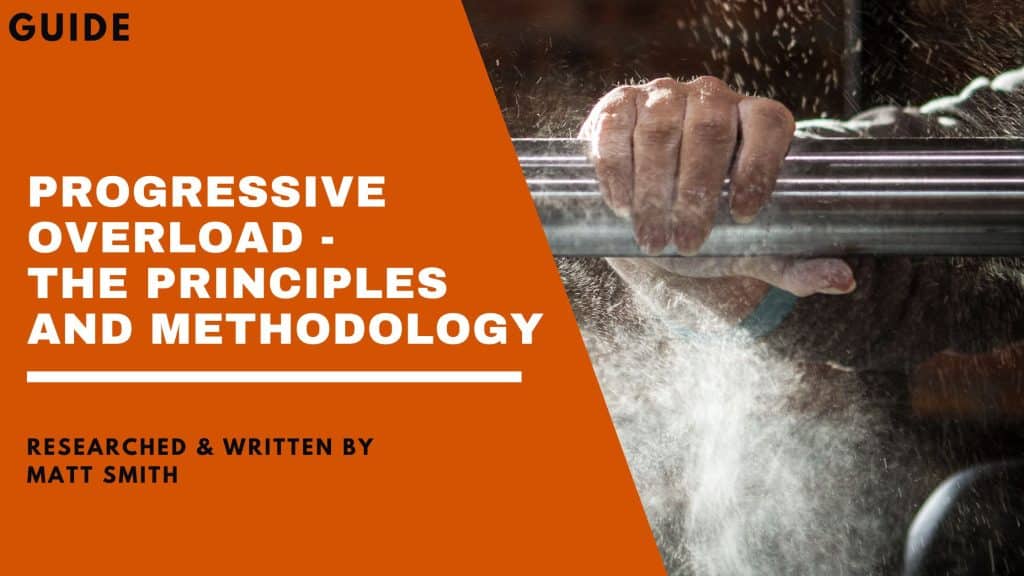Matt Smith explains progressive overload – the principles and methodology, and why it’s so important you ingrain it into your workout, your routine, and indeed your mindset.

Are you concerned about your weight loss? Are you looking to build muscle and trying to find the best possible way to train yourself in a gym? Are you trying to figure out the best workout routine for yourself?
If so, you have probably heard about Progressive Overload – but if you are new to weightlifting, you might not know exactly what it is.
Several things matter when it comes to losing weight and building muscle with a fitness regime. Frequency, schedule, intensity and volume: you need to select the optimal level of all these things for a healthy exercise regime. Get the perfect blend of these and you will be able to get the best results.
What is progressive overload?
Let’s start by stating the principle first. The principle focuses on forcing the human body to adapt to the new workout regime that you will be following. It believes that for muscles to grow and performance to increase, our bodies need some external force. It won’t just automatically adapt to the new workout regime.
We’ll give you an example. Our bodies don’t consider or care about any exercise or workout that we do. They don’t get to know what’s going on in our mind if we want to achieve certain goals. But our bodies are very good at adaptation and here in lies the key.
We need to constantly push our bodies towards the workout we are doing. We need to tell our bodies that these changes and improvements are necessary for it to get in shape and then only will it adapt to the new changes.
The principle of progressive overload stresses on increasing the demands of our musculoskeletal system constantly. This will increase your endurance and strength. If the demands that you put on your muscles are decreased or not even maintained it can lead to your muscles losing size and strength.
While it is a very simple concept, it is very important for building muscle mass. And if you are thinking that the principle just applies to muscle training exercises, you are wrong.
The principle holds true for other cardiovascular exercises too. The principle is important as you won’t gain muscle and strength if you are not following it religiously.
You are misunderstanding the principle if you think that you can overdo exercises. Overdoing can lead to injury in the muscles. You need to find the right balance between both of these. Your body has its own capacity to recover and you should not exceed your workout over and above this capacity.
Ways to progressively overload
Increase the intensity
You need to increase the intensity of your training. If we talk about weightlifting, you should be increasing the weight that you are lifting in each session.
Increase the volume
Performing a higher number of reps or exercises in every training session will increase the volume of your workout. This is a crucial component of progressive overload.
Increase the frequency
You also need to increase the number of training sessions that you do each week. With time, the number of training sessions should increase. This will increase the frequency of your workout.
Increasing The Tension
You also need to work on increasing the duration of your workout gradually. Every time you increase the weight, time, or number of repetitions, you are putting your muscles under more tension.
Some golden rules of progressive overload
Your trainer is the best person to explain the golden rule of progressive overload to you. They need to keep several things in mind before suggesting anything to you. Here’s what most of the trainers suggest:
To increase and change one variable at a time. No good trainer will ask you to increase the intensity and frequency all at once. The basic principle here is that one variable is changed at a time ensuring that the body doesn’t feel overstressed.
To increase volume before intensity. The number of sets and reps that you perform determines the volume of your workout. And intensity is the increase in the weight or resistance. Trainers suggest that you should increase the volume first. This will enable your body to recover faster. Expert trainers suggest that the volume of the workout should be increased before you proceed to increase the intensity.
Example of progressive overload
Let us assume that right now you can lift 50lbs and can repeat it 3 times in sets of 3. If you continue to lift the same weights for the next 10 years, you would not benefit from the exercise. You need to increase this number gradually.
If you are not increasing the weight, you are not giving your body a chance to do more. Your body is also not seeing any reason to change or improve. You need to give your body this reason.
Now, in this example, if you increase the number of reps to 4 or 5, you are giving a reason for your body to push more. It might seem to be a tiny increment, but it can have long-term advantages for your body.
Most people fail to provide this reason to their bodies and thus fail to achieve the desired results.
Do you need to do this for every single workout that you do?
No, not at all. In fact, you won’t be able to do this.
You should set realistic goals for yourself because you will therefore be in a state to fulfil them. Your need to strive towards increasing the demands of your body, so that it gets used to these demands and improves accordingly.
The take-home message of this article is that you need to push your body constantly to achieve the goals you’ve set for it. Progressive overload will ensure that you are achieving the desired goals, within a stipulated time.
Finally, you won’t have to figure out all the details of this workout routine. Your trainer will do this for you.

